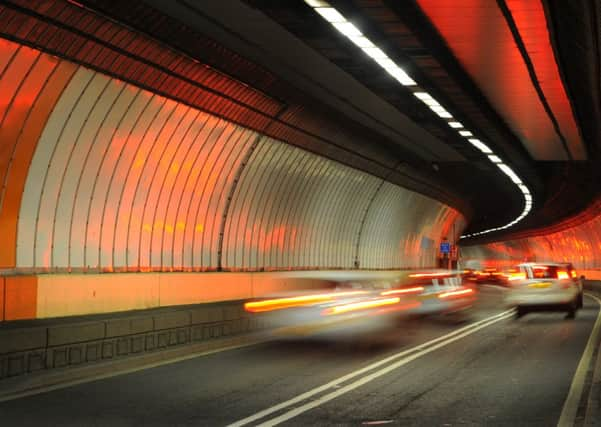New Glasgow hospital brings summer gridlock threat


The new complex, which will also be Scotland’s largest, replaces the Western Infirmary and nearby Royal Hospital for Sick Children at Yorkhill north of the river, and the Victoria Infirmary on the south side.
Staff numbers at the expanded Southern General Hospital site, just south of the tunnel, will more than double from 4,790 to 10,561 from June.
Advertisement
Hide AdAdvertisement
Hide AdThey also include some transferring from Gartnavel General Hospital, also north of the river, and the Mansionhouse unit for elderly care near the Victoria Infirmary.
Institute of Advanced Motorists policy and research director Neil Greig said: “The tunnel is already overloaded and frequently closed for maintenance, so any extra load is a worry.
“It does seem large amounts of money are being spent on the new access corridor through Govan with little obvious work in the Clyde Tunnel area.
“Parking will be another challenge and we trust the new hospital will recognise the reality that most people have no choice but to drive to these huge regional centres of excellence.”
Dave Brennan, a cycle campaigner who also works as a clinical scientist at the Southern General, said: “The Clyde Tunnel is already a bottleneck for car traffic coming from the north of the city, with delays common.
“I fully expect these delays will significantly increase, with many workers and patients shifting to the new hospital with very limited public transport.
“Glasgow has invested in public transport to the site, however the focus has been on bringing people in from the city centre to the east of the hospital.
“There is a significant lack of public transport coming in from the north and south.”
Advertisement
Hide AdAdvertisement
Hide AdThe Scottish Ambulance Service did not expect difficulties getting patients to hospital because they could be stabilised by ambulance staff and sent elsewhere if needed.
FOLLOW US
-----------------------------------------
-----------------------------------------
SCOTSMAN TABLET AND MOBILE APPS
Its spokesman said: “The normal protocols in the event of closure of the Clyde Tunnel would continue to operate, whereby the clinical condition of the patient will dictate where they are taken.
“If they are stable, and arrival at hospital is not time critical, then the ambulance will use either Kingston Bridge or Squinty Bridge.
“If it is time critical they would be taken to Glasgow Royal Infirmary.
“In most cases, patients are not transported to hospital until they are stabilised by the ambulance crew, so the response time to patients is more significant then the travel time to hospital.
“A journey to hospital of a few more minutes will not usually have an adverse effect on care.”
Glasgow City Council said: “A transport assessment for the new South Glasgow hospitals campus was carried out in 2007 by transport consultants appointed by NHS Greater Glasgow and Clyde.
“The council’s input into this process was to agree the scope of study and to foster the greater use of public and sustainable transport.
Advertisement
Hide AdAdvertisement
Hide Ad“A key consideration in our assessment was the ability of the strategic and local road network to accommodate any substantial increase in traffic to and from the site.”
NHS Greater Glasgow and Clyde, which is in charge of the new hospital site, said: “We have been working comprehensively with the city council and Strathclyde Partnership for Transport regarding transport arrangements for this significant development.
“We are investing £5.2 million as part of a detailed travel plan which will improve accessibility to the campus.
“Improved public transport routes, traffic controls in the area and upgrading works to the local road and network are all being implemented.
“We are investing over £30 million in car parking, which include multi-storey car parks and improvements to existing parking.”
The health board added that the Fastlink dedicated busway would provide direct access to the site from the city centre for the first time.
SEE ALSO
• [http://www.scotsman.com/mobile/news/education/15m-scots-gene-sequencing-tech-project-launched-1-3658053|£15m Scots gene sequencing tech project launched|Link to article}